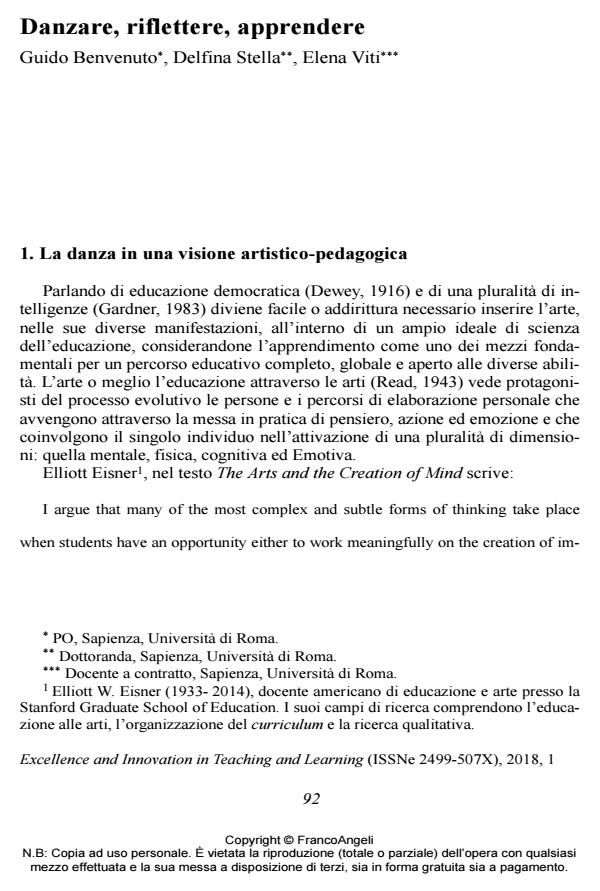Dance, reflect, learn
Journal title EXCELLENCE AND INNOVATION IN LEARNING AND TEACHING
Author/s Guido Benvenuto, Delfina Stella, Elena Viti
Publishing Year 2018 Issue 2018/1
Language Italian Pages 13 P. 92-104 File size 288 KB
DOI 10.3280/EXI2018-001006
DOI is like a bar code for intellectual property: to have more infomation
click here
Below, you can see the article first page
If you want to buy this article in PDF format, you can do it, following the instructions to buy download credits

FrancoAngeli is member of Publishers International Linking Association, Inc (PILA), a not-for-profit association which run the CrossRef service enabling links to and from online scholarly content.
Arts are an integral part of the culture of education and a privileged tool for practical knowledge and active learning, because they are based on learning models focused on experience and personal and creative development of individuals or groups involved in the educational practice. In this context, dance aims to redefine ideals and stereotypes linked to the imaginary of equilibrium and aesthetic perfection to place itself and act in educational and social contexts through a creative, inclusive and wandering practice. From this point of view the teaching of dance is facing new century challenges, working on the personalization of some new educational paths, focusing on the knowledge and practice of the art of movement. The research project we present is a didactic and performing dance project that involved three groups of dancers and non-dancers in a learning path oriented towards the development of creativity and reflective practice through dance. The project was carried out in Finland and discussed as the final thesis of a master degree at the National Academy of Dance in Rome.
Keywords: Dance education, reflective thinking, active learning, creative, practice, intergenerationality.
Guido Benvenuto, Delfina Stella, Elena Viti, Danzare, riflettere, apprendere in "EXCELLENCE AND INNOVATION IN LEARNING AND TEACHING" 1/2018, pp 92-104, DOI: 10.3280/EXI2018-001006